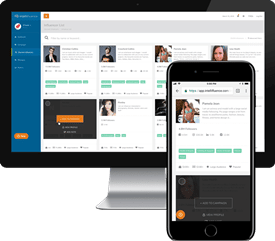Last Updated on December 30, 2020
This is article 7 of the 14 part series; you’re just about halfway done — believe me when I say that if you read from the beginning to the end you’ll be more versed on influencer marketing than 90% of the industry that actively sells the service for a living. In today’s segment we’re going to focus on selecting the right product influencers. In order for this to make sense we’re going to need to assume four things:
- You have a defined goal for campaign success.
- You have a strong understanding of who your intended buyer is.
- You know which social channels you want to target.
- You understand the type of influencer you are targeting.
Probability of Influence
I know what you’re thinking.
It’s ok. I’m not a mathematician and during my MBA program I often left early in my statistics class, so we’ll not develop true probabilistic models. Instead, let’s treat this like some simple algebra.
Outcome = (Reach * Engagement * Relevance) — Cost
Yes, this is overly simplified, but really not by much. Let’s discuss.
Reach — reach in this definition is just the primary reach. There are ways to measure secondary reach on how many people are seeing a message when it is shared/retweeted/re-pinned, but for the sake of our simple calculations we’re using audience size as a measurement of reach, and of course that audience size is based on a single social channel. Otherwise, comparing someone’s Instagram reach to someone else’s YouTube reach would be to enter the apples and oranges conundrum. Raw audience size as a number can be used here.
Engagement — engagement is a measurement to show what percentage of posts receive some degree of liking, sharing, comments, etc. The reason it is important is because it is possible to find an influencer with an extremely large audience of followers that have largely tuned out, effectively ad blind; also, it helps to identify which audiences are fake — it isn’t hard nor expensive to buy 100,000 Twitter followers; it is, however, more expensive to buy 100,000 twitter followers and purchase daily engagement from all of them. Since there can be varying degrees of engagement, for simplicity reasons we are going to use engagement as a percentage, looking at a random sampling of posts and seeing how many of those posts had any engagement. For your own calculations you could choose to assign different values for different levels of engagement, though we find this is a rough filter that effectively provides the same answer with less calculation.
Relevance — similar to engagement, this is also a percentage, and is going to be different for every single product/channel combination you can think of. How can you calculate this? It is a guesstimate; there are some analytics companies that provide sentiment analysis and are attempting to crack relevancy, however they are not quite to the level where we feel comfortable using them inside of Intellifluence’s influencer discovery tool. Assign a relevancy percentage based on profile page, on recent posts, whatever you want — but be reasonable; if I mention “yoga” once every few months on Twitter I’m not 100% relevant to yoga, but I might be 20% based on my perceived expertise and what I share with my audience.
Cost — Cost is cost. In most cases at Intellifluence, the cost for the brand is just the product cost + shipping; in some cases when negotiating with an influencer you might need to offer money as well, but this is rarer than it is common. The reason I like to show cost here is because it is the biggest balancer on audience reach; typically much larger audiences charge a lot more money.
Let’s see this in action!
Two, non-randomly chosen examples: Joe S and Damien T
I know Damien so I hope he doesn’t mind this playful comparison.
Joe S

Damien T

Who should you choose, if you were picking between Damien and me? It depends.
Example 1: selling deadlift bars on Twitter
Joe S Outcome = (Audience (3636) * Engagement (80%) * Relevance (20%) — $250 [cost of product + shipping guess])
Joe S Outcome = 331.76
Damien T Outcome = (Audience (41400) * Engagement (90%) * Relevance (2%) — $250 [cost of product + shipping])
Damien T Outcome = 495.2
Even though I might be more relevant than Damien on matters related to deadlifts, because he has such a large audience that engages with him, it might make more sense to have him review the product. This is a prime example of using peer influencers with large audiences for generalized products.
Example 2: influencer marketing SaaS toolset
Joe S Outcome = (Audience (3636) * Engagement (80%) * Relevance (100%) — $0 [digital products!])
Joe S Outcome = 2908.8
Damien T Outcome = (Audience (41400) * Engagement (90%) * Relevance (7%) — $0)
Damien T Outcome = 2608.2
Damien is probably more relevant than 7%, but I wanted to highlight an example of where relevance is going to win out over raw audience size. Had I assumed a 10% for Damien, he’d have once again placed ahead of me and I’d be crying into my beer.
Why Choose?
The conundrum of the above scenario is based on a potentially faulty assumption of having to choose. Feasibly, so long as the outcome is a positive number, there is a benefit to engaging with both Joe and Damien. This is true for both examples but particularly on matters of influencer marketing. If you had 20 sample products that could be provided and found 20 somewhat relevant influencers with decent audience sizes, it’d most likely be in your best interest to engage with all of them. This is doubly true for those of you selling digital products; if there’s no real cost associated by offering a free version, then you almost want to engage with as many influencers as you possibly can — the reality is any positive review will be beneficial, of course not accounting for the time investment.
How to do this with Intellifluence?
We make it pretty easy. After you register as a brand and login, it is just a matter of filtering on geography, social networks, and then if necessary playing with keyword selections. Since we don’t hide social accounts once authenticating brand logins, you can assign your own metrics to determine engagement and relevance — at that point, since the cost in most cases will just be the product sent to influencers, you can score the influencers you want to work with and get started on pitching them.

Joe, CEO and Co-Founder of Intellifluence, has over 25 years of experience in SEO, leading several successful marketing companies and providing expert consultation. He is the author of The Ultimate Guide to Using Influencer Marketing, which is available as an eBook or in print.







